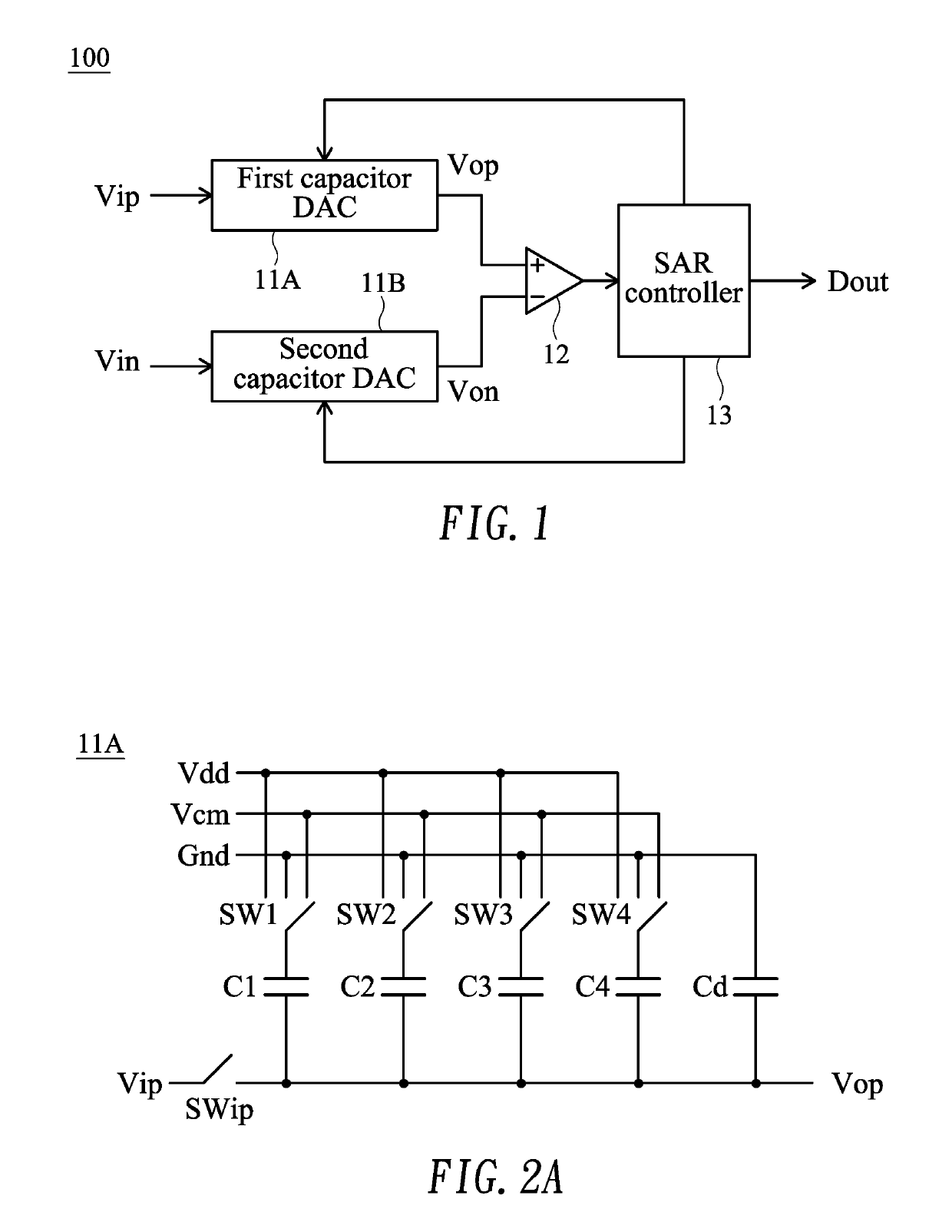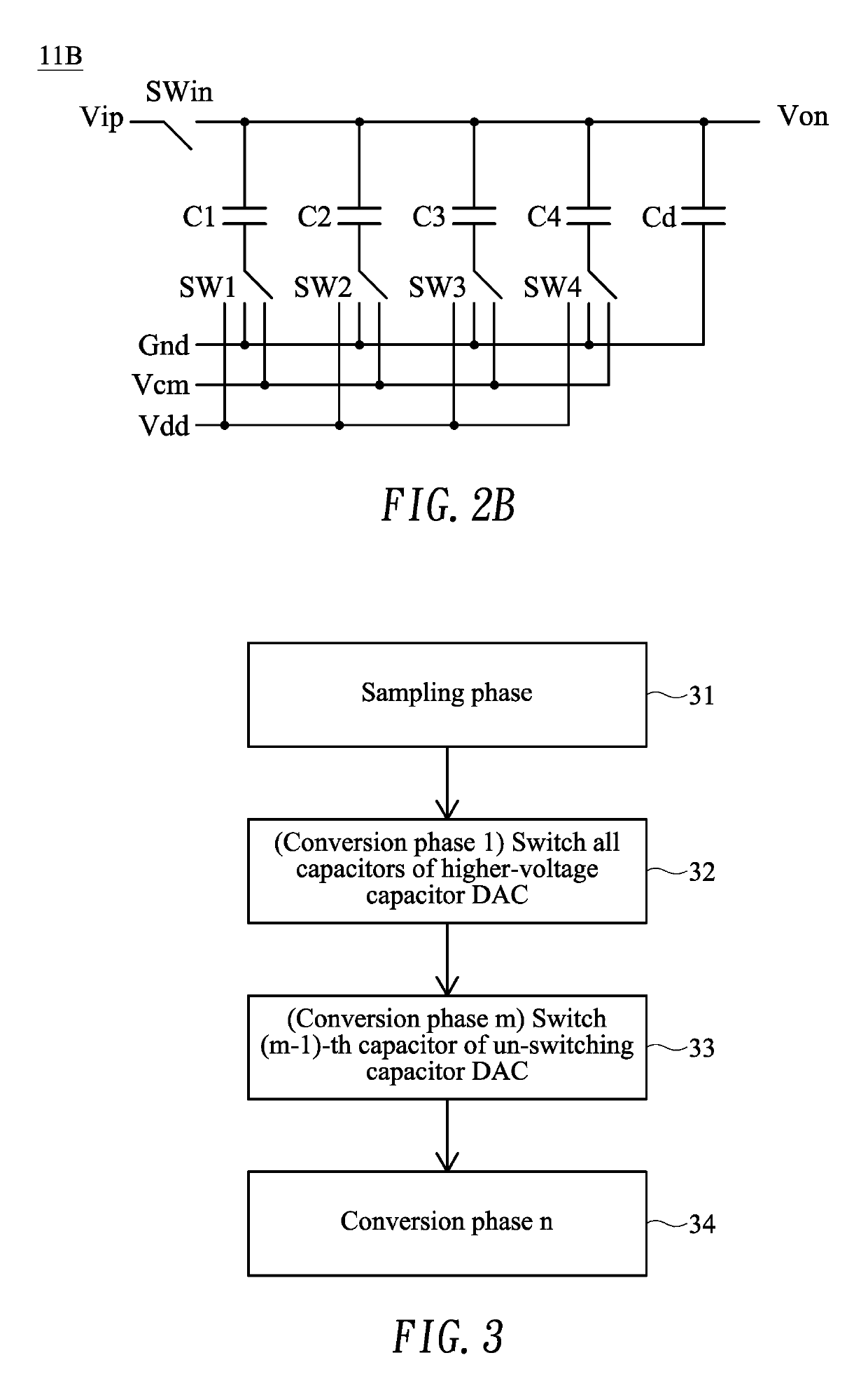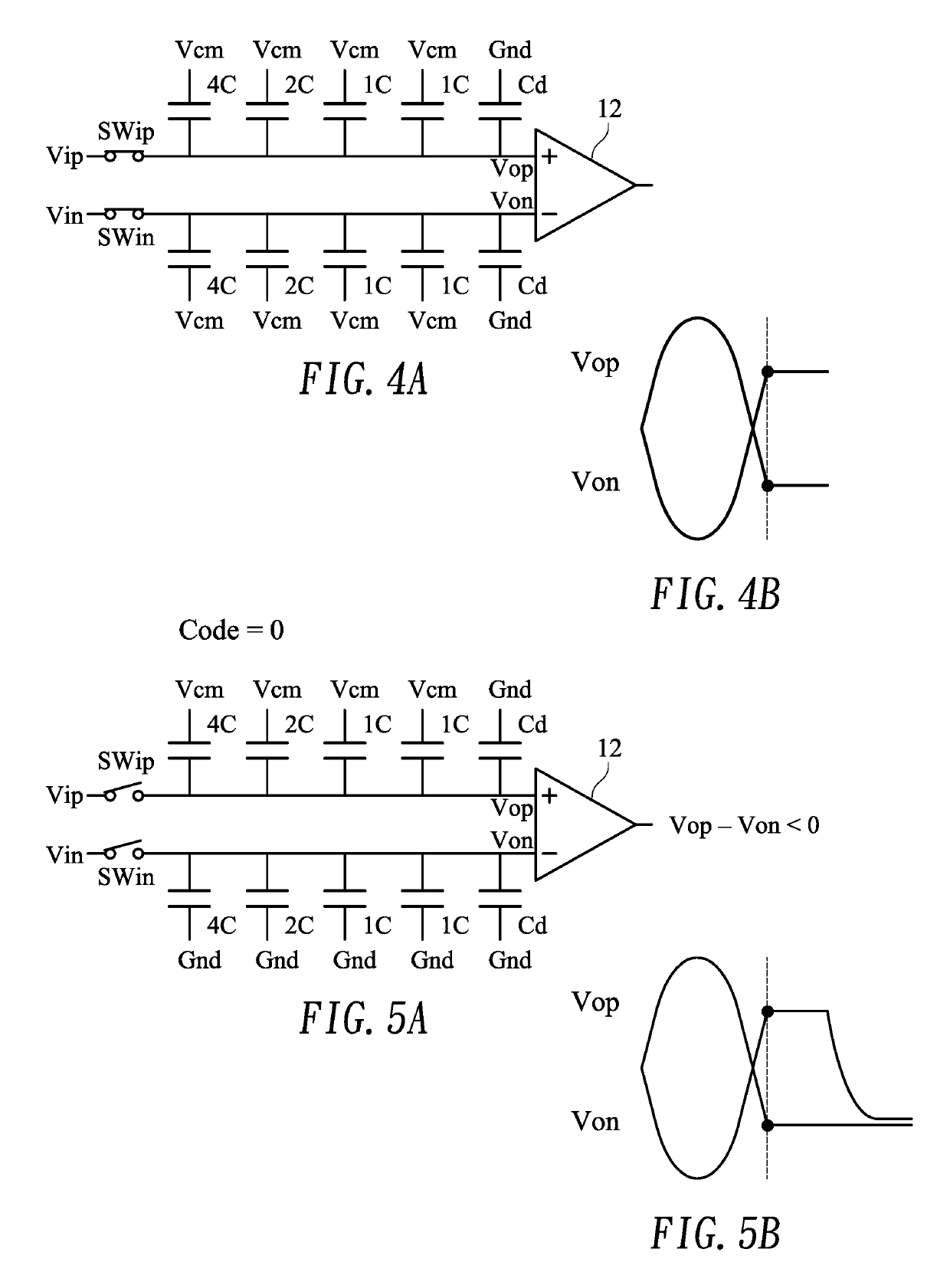SAR ADC with high linearity
a technology of linearity and adc, applied in the field of adc, can solve the problems of non-linearity, capacitor mismatch, and power consumption that is still too high to adapt to some electronic devices with limited power sources, and achieves the effects of improving capacitor mismatch, high linearity, and low power consumption
- Summary
- Abstract
- Description
- Claims
- Application Information
AI Technical Summary
Benefits of technology
Problems solved by technology
Method used
Image
Examples
Embodiment Construction
[0011]FIG. 1 shows a block diagram illustrating a successive approximation register (SAR) analog-to-digital converter (ADC) 100 with high linearity and low power consumption according to one embodiment of the present invention.
[0012]In the embodiment, the SAR ADC 100 may include a first capacitor digital-to-analog (DAC) 11A and a second capacitor DAC 11B that are coupled to receive a first input signal Vip (e.g., a positive input signal) and a second input signal Vin (e.g., a negative input signal) respectively, and are configured to generate a first output signal Vop (e.g., a positive output signal) and a 15 second output signal Von (e.g., a negative output signal) respectively.
[0013]FIG. 2A shows a circuit diagram illustrating the first capacitor DAC 11A of FIG. 1. The first capacitor DAC 11A, for an n-bit SAR ADC 100, of the embodiment may include an array composed of n−1 capacitors including a first capacitor, a second capacitor, . . . and an (n−1)-th capacitor. A further capaci...
PUM
 Login to View More
Login to View More Abstract
Description
Claims
Application Information
 Login to View More
Login to View More - R&D
- Intellectual Property
- Life Sciences
- Materials
- Tech Scout
- Unparalleled Data Quality
- Higher Quality Content
- 60% Fewer Hallucinations
Browse by: Latest US Patents, China's latest patents, Technical Efficacy Thesaurus, Application Domain, Technology Topic, Popular Technical Reports.
© 2025 PatSnap. All rights reserved.Legal|Privacy policy|Modern Slavery Act Transparency Statement|Sitemap|About US| Contact US: help@patsnap.com



